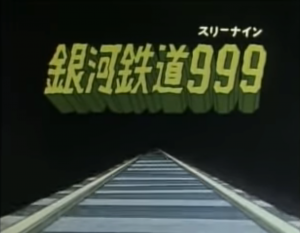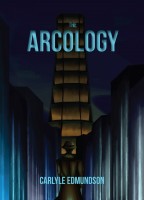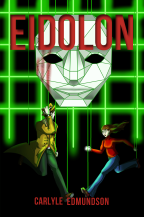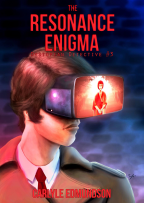A Subjectively Obscure Sci-Fi Primer: Galaxy Express 999
- June 29th, 2019
- Posted in A Subjectively Obscure SciFi Primer . Opinion/Analysis
- Write comment

In a shocking turn, the Obscure SF Primer is back, ready to look at Galaxy Express 999, after nearly a year’s absence. If you want to know why, you can read here about what’s kept me from writing. Enough of that, though; let’s get on with the article!
Galaxy Express 999 is a 1977 anime that’s both little known in the west and extremely influential. It was created by Leiji Matsumoto and set in the so-called “Leijiverse,” which consists of other classic anime series such as Space Pirate Captain Harlock and Space Battleship Yamato. It has the fairly bizarre premise of being set on an intergalactic train which travels along the invisible space rails from planet to planet, stopping only for one day’s worth of local time (which can be as short as a few hours to several days) before moving on to the next destination–whether all passengers are aboard or not. You might think this doesn’t sound very sci-fi; after all, a space train is just whimsical fantasy, especially when it seems to literally operate like a steam engine. Still, the core ideas at the heart of this series are the same ones that play a role in countless others, regarding what it means to truly be human, and the cost of achieving immortality. With that said, let’s dive into Galaxy Express 999.
As always, let’s start off with our characters, beginning with protagonist and adorable rascal Tetsuro Hoshino. Tetsuro’s a 10 year old boy (well, it is anime, after all) who grew up poor on Earth, until his mother was gunned down by cybernetic human hunters for sport as the pair was trying to reach the city, where they hoped to earn enough money to leave Earth forever. Left for dead in the snow, he’s found by a mysterious woman named Maetel who offers him free tickets for the 999 — a train route that runs to the Andromeda galaxy, where it’s said that humans can receive mechanical bodies for free. Since Tetsuro’s mother’s final wish was for him to get a mechanical body so he’d never have to suffer again, he’s more than happy to accept these, and departs with Maetel (after some bloody revenge on the hunters) to see the galaxy, ride the rails, and finally shed his frail human body for good. Of course, the trip isn’t easy; there’s weird space anomalies, bizarre aliens, and literally dozens of people who’ve already gotten mechanical bodies that aren’t as pleased as they thought they’d be. And Maetel, of course, has secrets and plans of her own, which Tetsuro remains oblivious to.
The Good
- Maetel and Tetsuro are very well developed characters as the series goes on; they’re also both quite the capable fighters, rather surprisingly, and are willing to get their hands dirty if need be (to the point where Maetel deliberately allows a planet to be destroyed!). Still, they don’t forget that Maetel’s waifish build leaves her at a disadvantage at times, and Tetsuro is literally a small child who can be easily tricked and thrown around. Tetsuro also possesses an odd mix of cynicism and naivete as a result of his experiences, which makes him very compelling to watch.
- Contrary to the episodic tone of the series, they rarely forget what they’ve already gone through and will often apply lessons from previous stops to the problems they’re currently facing. There are a fair number of two parters as well, meaning that story ideas which need a little room to breathe are allowed that.
- Absurd premise of the train aside (Tetsuro sticks his head out the window CONSTANTLY), the show tries to teach some real science every now and then, usually through Maetel. It’s often hilariously accompanied by something outlandish that the episode will hinge on, but I gotta give them credit for at least trying to sneak some real facts in.
- The highest praise I can really give this show is that, at times, it feels like a Japanese Star Trek. Tetsuro’s childhood innocence often leads to them doing the morally right thing, even when it puts them at risk of being stranded in a strange place. Some of the space anomalies feel like they’re out of TOS, and weird story concepts like “a planet inexplicably full of doppelgangers” would’ve fit right in. The show is very concerned with what it means to be human, and how that humanity can be lost, exploring it in much the same way that Trek handles character arcs for the likes of Data and Spock. I did not have much expectation going in, but the bizarre situations and surprising depth had me hooked quickly.
The Bad
- It’s 1970’s era Japanese animation. It’s cheap and low quality in many places. The amount of women who look just like Maetel without even acknowledging it is just ridiculous. I thought initially there was something to the fact that Tetsuro’s mother looked like Maetel, but it turns out that applies to about 90% of the female characters in the series. Still, some of the space shots can be quite pretty, and the train is almost always in great detail.
- Writing can be spotty at times; Maetel has a huge array of weapons at her disposal, which can be conveniently missing or conveniently available depending on the needs of the plot. In one episode, she has an ANTI-MATTER GUN, which really would’ve come in useful in a lot of other episodes if she’d thought to mention it. At times, this can be excused by some sort of attempt to teach Tetsuro a lesson, but not always. The show’s no stranger to deus ex machina, so if that bothers you, it might get on your nerves.
- It’s a hell of a dystopian universe for what is ostensibly a kid’s show. There’s nothing inherently wrong with that, but damn, no one is willing to show this little boy mercy. He definitely has PTSD, even if they didn’t call it that at the time; he’s shown to have nightmares and flashbacks to traumatic incidents, particularly his mother’s death, on the regular. There’s nothing too graphic, of course, but still, it’s rather brutal treatment for a child character, which could turn some fans off.
- It often feels like the only ones aboard the 999 are Maetel, Tetsuro, and the conductor; anyone else we see is relevant to that episode’s plot and will not be seen again. This makes it all the more ridiculous when the conductor refuses to let them board because of lost tickets and so on. Will there even be anyone for the train to transport if you don’t? It’s likely a result of the low budget animation, but there aren’t even background extras, so it really stands out.
I’ll be honest–unlike most shows I’ve reviewed, I haven’t had a chance to finish this one yet; coming in at 113 (half hour) episodes, Galaxy Express 999 is a lot longer than most of what I’ve reviewed previously as well. However, I really love what I’ve seen of it so far, and fully intend to finish it. There’s also several movies, OVAs, and spinoffs over the years that relate to this or adapt it, which you could also check out if you’re on the fence.

A quick reminder of my rating system: a 5 represents must-see–a “hidden gem,” as it were. A 4 is good, solid television. A 3 is “cult classic” stage, where the show’s appeal is likely limited to a specific group. A 2 is flawed, but fun, or even “so bad it’s good,” depending on the series and its release timeframe. A 1, of course, is avoid at all costs. Galaxy Express 999 can be streamed on Crunchyroll, or through the PlutoTV app (subtitled). There is no English dub of the series, although several of the related media have had dubs at various points with varying availability. As far as subtitled shows go, it’s really not too bad, offering plenty of time to read and enjoy what you’re seeing. If you have a tolerance for subtitles and older media, definitely give this show a shot.
Are there any little known shows, live action or anime, that you’re a fan of and that you’d like me to cover? Leave them in the comments below. Consider joining the mailing list to be notified of future Primers, and to gain access to the exclusive short Unjustified Nostalgia. Alternatively, if you’d like to read a little more of my writing, you can check out The Resonance Enigma, or my previous novels, The Arcology and Eidolon.




Glad things have settled for you. I enjoy the site tremendously and I am glad that there will be more articles in the future. Take care and be well.
Missed your stuff! Have you thought about doing Starhunter or SeaQuest?
I have both of those on the list, I’ve just had a hard time finding a way to watch them. I hope to do both at some point this year!